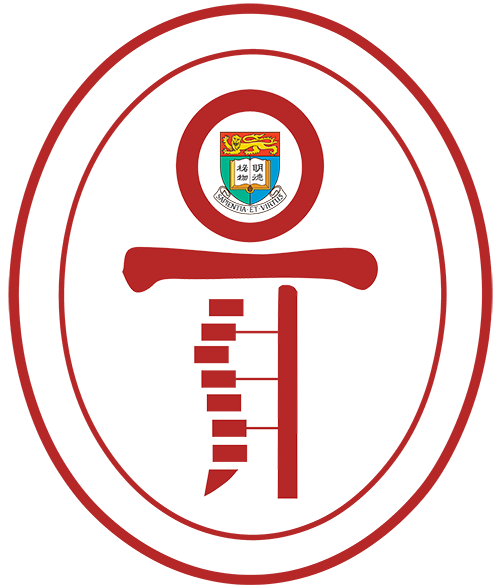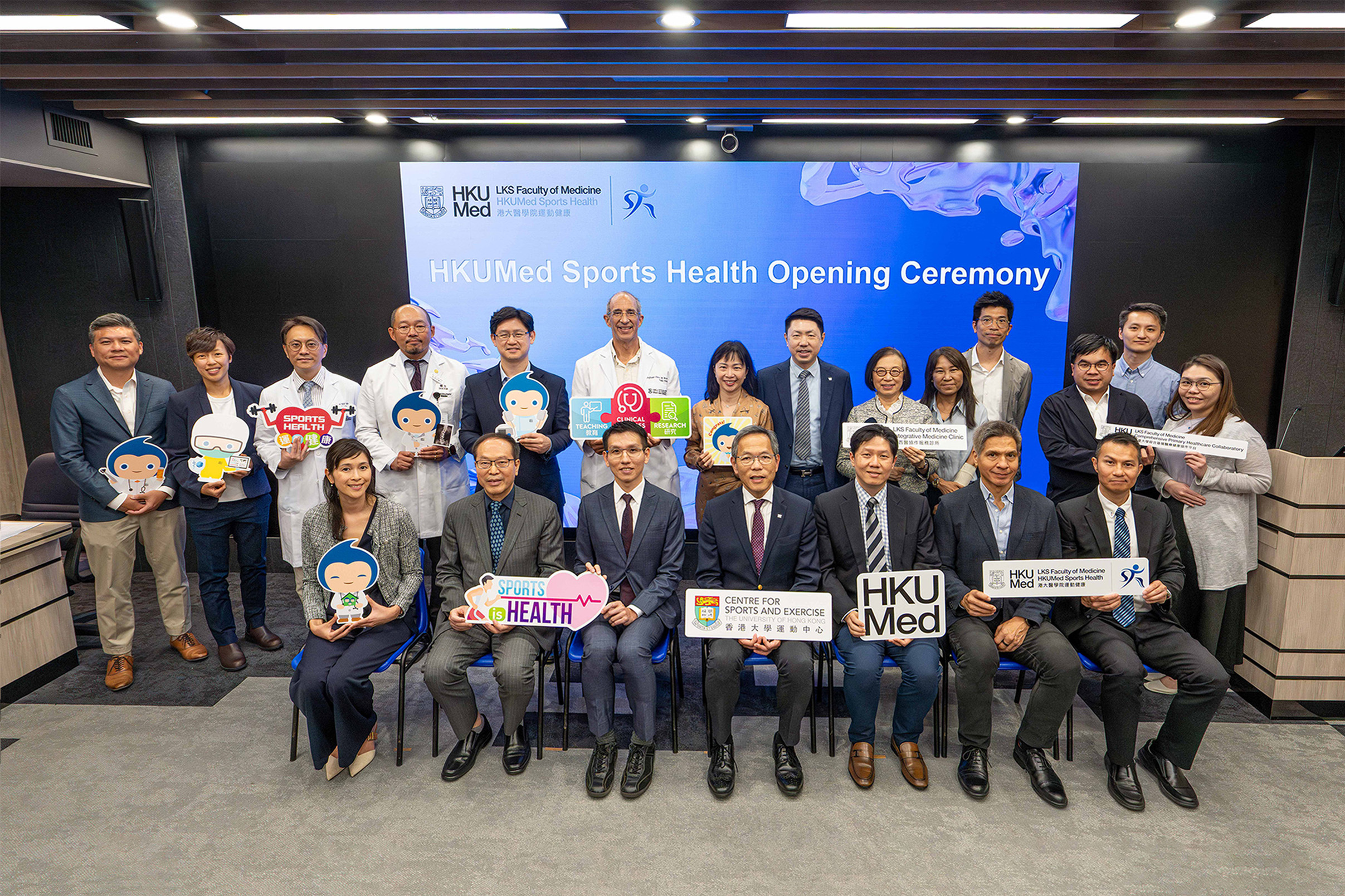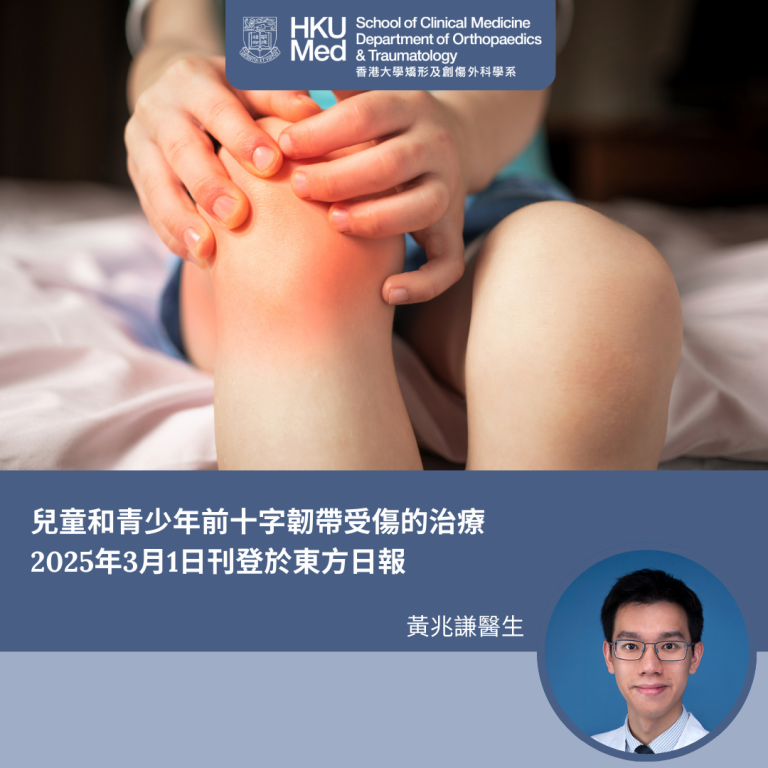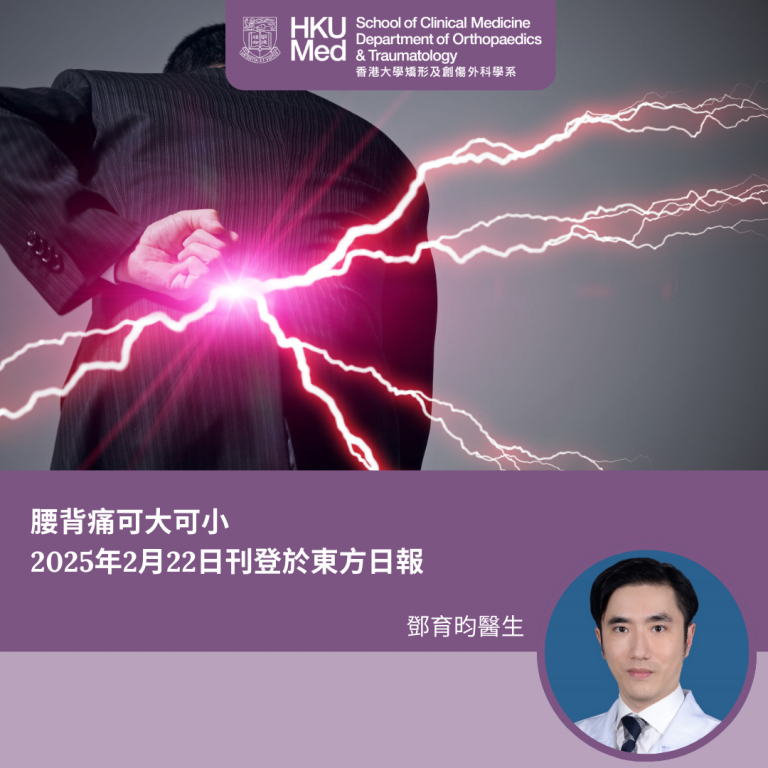HKUMed researchers uncover key genetic clue in adolescent idiopathic scoliosis (AIS)港大醫學院發現青少年原發性脊柱側彎(AIS)患者的遺傳成因
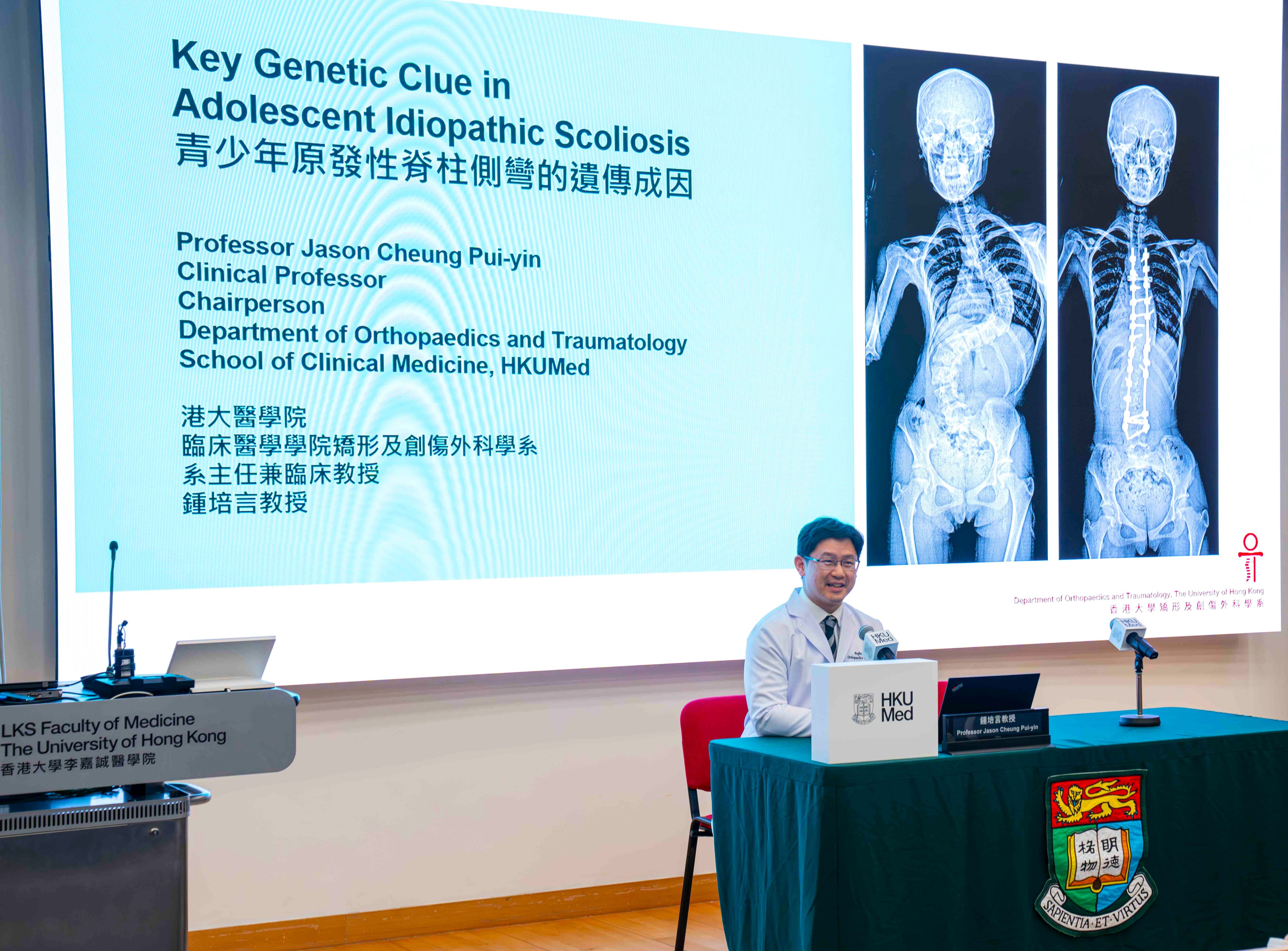
24 January 2024
An interdisciplinary research team led by Professor Jason Cheung Pui-yin from the Department of Orthopaedics and Traumatology, School of Clinical Medicine, LKS Faculty of Medicine of the University of Hong Kong (HKUMed); Dr Song You-qiang, School of Biomedical Sciences, HKUMed; and Dr Gao Bo, School of Biomedical Sciences, Faculty of Medicine, The Chinese University of Hong Kong; has achieved a global breakthrough by identifying a common underlying cause of adolescent idiopathic scoliosis (AIS), the most common form of spinal deformity, which affects millions of adolescents worldwide. The team discovered that variations in the SLC6A9 gene may cause idiopathic scoliosis, resulting in dysfunction of synaptic neurotransmission and central pattern generators (CPGs). This significant discovery was published in The Journal of Clinical Investigation [link to publication].
Background
AIS is a common skeletal disorder, characterised by a lateral curvature of the spine exceeding 10 degrees, which affects 3.5% of adolescents aged between 10 and 18 in Hong Kong[1] . It worsens during puberty and can result in various complications including impaired cardiopulmonary functions, shortness of breath, back pain, uneven shoulders and hips, and overall poor cosmesis. These physical challenges can impact the social and psychological well-being of the affected individuals. Currently, treatment options are limited to bracing and invasive surgery after the condition develops. Preventive interventions remain unavailable, and its etiology is uncertain.
Research methods and findings
The research team investigated the genetic basis and pathogenic mechanism of AIS with a combined 1,701 AIS patients and 3,219 controls from the University of Hong Kong, Texas Scottish Rite Hospital for Children, and Peking Union Medical College Hospital in Beijing. They identified rare variants in the SLC6A9 gene, responsible for producing a protein called glycine transporter 1 (GLYT1), which can lead to disruptions in the transmission and coordination of nerve signals. GLYT1 plays a crucial role in regulating glycine levels in the body, which is essential for proper nerve signalling in the spine.
The team revealed that these identified variants in SLC6A9 resulted in reduced glycine uptake activity, leading to an increased glycine level and aberrant glycinergic neurotransmission. To further validate their findings, the team developed a novel zebrafish model with a disrupted SLC6A9 gene, mirroring the gene changes observed in humans with AIS. The mutant zebrafish exhibited spinal curvature and discoordination of spinal neural activity, resembling the symptoms found in AIS patients.
The team also investigated the role of CPGs, which are neural circuits in the spinal cord responsible for generating rhythmic movements, such as walking or breathing. They discovered that excessive glycine, caused by mutant GLYT1, may interfere with the normal function of CPGs, potentially contributing to the development of AIS.
In a further exploration of potential preventive therapies, the team tested sodium benzoate, a glycine neutraliser used clinically to treat patients with glycine encephalopathy, on the mutant zebrafish. The results showed that sodium benzoate can moderately reduce the severity of curvature in zebrafish, suggesting that it could provide a potential preventive therapy for AIS patients with high glycine levels.
AIS Cases
Among the patients involved in the study, Miss Lam and Miss Law were particularly instrumental in the success of the research. Both of them experienced severe scoliosis during their teenage years, and underwent surgical correction of their scoliosis deformities at the Duchess of Kent Children’s Hospital. Subsequently, 61% of Miss Lam’s family and 50% of Miss Law’s family also developed scoliosis, several of whom required surgical intervention. This SLC6A9 mutation carries an autosomal dominant pattern, which was found in the many involved members of their families.
Significance of the study
AIS lacks an agreed-upon etiology, impeding early intervention. While genetic factors are known to play a significant role in the development of AIS, the heritability and causal mechanisms remain unclear. ‘Our research efforts to identify AIS-related genetic variants can help fill the gaps, leading to targeted treatments and personalised medicine for AIS,’ said Professor Jason Cheung Pui-yin, Chairperson and Clinical Professor of the Department of Orthopaedics and Traumatology, School of Clinical Medicine, HKUMed.
This groundbreaking discovery by the HKUMed research team not only sheds light on the genetic factors contributing to AIS, but also paves the way for the development of new diagnostic methods and potential preventive therapies. ‘With further research and clinical trials, the findings may revolutionise the management of AIS and greatly improve the lives of adolescents affected by this condition,’ added Professor Cheung.
About the research team
The research was led by Professor Jason Cheung Pui-yin, Chairperson and Clinical Professor, Department of Orthopaedics and Traumatology, School of Clinical Medicine, HKUMed; Dr Song You-qiang, Principal Lecturer, School of Biomedical Sciences, HKUMed; and Dr Gao Bo, Associate Professor, School of Biomedical Sciences, Faculty of Medicine, The Chinese University of Hong Kong. The first authors were Wang Xiaolu, Department of Orthopaedics and Traumatology, School of Clinical Medicine, HKUMed, and Yue Ming, School of Biomedical Sciences, HKUMed. Members of the research team were Dr Prudence Cheung Wing-hang, Wang Xiaojun, Dr Hu Yong, and Professor Keith Luk Dip-kei, Department of Orthopaedics and Traumatology, School of Clinical Medicine, HKUMed; Fan Yanhui, Wu Meicheng, Chen Zheyi and Professor Danny Chan, School of Biomedical Sciences, HKUMed; Professor Tu Wenwei and Dr Wang Xiwei, Department of Paediatrics and Adolescent Medicine, School of Clinical Medicine, HKUMed. Also, Peking Union Medical College Hospital; Texas Scottish Rite Hospital for Children; Centre for Regenerative Medicine and Health, Hong Kong Institute of Science & Innovation, Chinese Academy of Sciences; and RIKEN Center for Integrative Medical Sciences, Japan.
Acknowledgements
The research was supported by the Health and Medical Research Fund (06171406), the Research Impact Fund (R5017-18F), and the Hong Kong Research Grants Council General Research Fund (17114519).
[1]Fong DY, Cheung KM, Wong YW, Wan YY, Lee CF, Lam TP, Cheng JC, Ng BK, Luk KD. A population-based cohort study of 394,401 children followed for 10 years exhibits sustained effectiveness of scoliosis screening. Spine J. 2015 May 1;15(5):825-33. doi: 10.1016/j.spinee.2015.01.019. Epub 2015 Jan 20. PMID: 25615844.
Related media interviews
Now
RTHK
i-CABLE
Ming Pao
HKET
信報
On.cc
HKCD News
am730
Bastille Post
BAUHINIA MAGAZINE
3phk.com
healthyD.com
bhkaec.org
Health Concept
Chinesepress
More on
2024年01月24日
由香港大學李嘉誠醫學院(港大醫學院)臨床醫學學院矯形及創傷外科學系鍾培言教授和生物醫學學院宋又強博士,以及香港中文大學醫學院生物醫學學院高波博士領導的跨學科研究團隊,近日取得全球性突破,成功識別青少年原發性脊柱側彎(Adolescent Idiopathic Scoliosis,AIS)的主要成因。AIS是最常見的脊柱畸形,影響全球數以百萬青少年。團隊發現SLC6A9基因變異,令突觸神經傳送及中樞模式發生器 (Central Pattern Generators)失調,導致脊柱側彎;這項重大發現已在學術期刊 《臨床研究期刊》 (The Journal of Clinical Investigation)發表(按此瀏覽期刊文章)。
背景
AIS是一種常見脊柱畸形疾病,當脊柱偏移角度超過10度即為脊柱側彎,而本港有3.5%介乎10歲至18歲的青少年為AIS患者[1]。脊柱側彎一般於青春期時惡化,可導致各種併發症,包括心肺功能受損、呼吸困難,或有背痛、高低膊、盤骨不對稱,造成外觀問題,有可能影響患者的社交活動和心理健康。目前AIS成因未明,而現有治療方案僅限於側彎發生後進行治療,包括佩戴矯正器(支架)或手術,並未有預防和早期干預的方法。
研究方法和結果
研究團隊為探究脊柱側彎的基因基礎及病理機制,對香港大學、德州Scottish Rite Hospital for Children及北京協和醫院合共1,701 名AIS患者和3,219名對照組人士進行基因檢測,鑑别出SLC6A9基因的罕見變異。該基因負責產生一種名為甘氨酸轉運蛋白1(GLYT1)的蛋白質,這些變異基因會導致神經訊號的傳遞和協調中斷。GLYT1負責調節中樞神經系統中的甘氨酸水平,有助正確傳導脊椎中的神經訊號。
團隊的研究揭示,SLC6A9變異基因會降低甘氨酸攝取,令甘氨酸濃度提高,產生異常的神經傳遞。為了進一步驗證他們的發現,團隊利用斑馬魚模型,透過基因編輯技術破壞斑馬魚的SLC6A9基因,模擬人類AIS患者的基因變化。研究結果顯示,突變斑馬魚表現出脊柱彎曲和神經活動不協調,與AIS患者的症狀相似。
團隊亦嘗試找出脊髓中的中樞模式發生器對AIS的作用。中樞模式發生器是負責自主產生步行或呼吸等節奏性行為的神經迴路,團隊發現GLYT1變異促使甘氨酸濃度過高,使中樞模式發生器無法正常運作而誘發AIS。
為探索AIS的潛在預防療法,研究團隊在突變斑馬魚上測試了苯甲酸鈉,這是一種臨床上用於治療甘胺酸腦患者的甘氨酸受體拮抗劑。結果顯示,苯甲酸鈉可以中度減輕斑馬魚的彎曲程度,有望為甘氨酸水平較高的AIS患者提供預防性治療。
AIS案例
在這項研究中,AIS患者林小姐和羅小姐是重要案例。兩人均於青少年時期患有嚴重的脊柱側彎,亦因此曾於大口環根德公爵夫人兒童醫院接受過脊柱畸形矯正手術。隨後,研究團隊陸續發現她們家族中多名成員均患有脊柱側彎,分別為林小姐及羅小姐家族成員中的61%及50%,團隊亦發現這些成員帶有遺傳性SLC6A9基因變異,部分家族成員亦需要接受矯正手術。
研究意義
由於醫學界對AIS的病因仍未有共識,因而阻礙了早期干預。目前已知遺傳因素對誘發AIS起著重要作用,惟此病的遺傳成因和病理機制至今仍然未明。港大醫學院臨床醫學學院矯形及創傷外科學系主任兼臨床教授鍾培言教授表示:「我們的研究旨在識別與AIS相關的基因變異,填補對遺傳成因與AIS關係方面知識的不足,開創為AIS患者提供針對性和個人化的治療新方案。」
這項突破性硏究不但揭示導致AIS的遺傳因素,更為研發新的診斷方法和預防療法創造條件。鍾教授補充:「我們可通過進一步研究和臨床試驗,革新目前對AIS的治療策略,希望能大大改善AIS患者的生活。」
關於研究團隊
研究團隊由港大醫學院臨床醫學學院矯形及創傷外科學系主任兼臨床教授鍾培言教授、港大醫學院生物醫學學院首席講師宋又強博士及香港中文大學生物醫學學院副教授高波博士領導。第一作者包括港大醫學院臨床醫學學院矯形及創傷外科學系王小魯及港大醫學院生物醫學學院岳明。團隊成員包括港大醫學院臨床醫學學院矯形及創傷外科學系張頴恒醫生、王小軍、胡勇博士、陸瓞驥教授;港大醫學院生物醫學學院范彦輝、吳美澄、陳喆溢及陳振勝教授;港大醫學院臨床醫學學院兒童及青少年科學系涂文偉教授及王系偉博士;以及北京協和醫院、德州Scottish Rite Hospital for Children、中國科學院香港創新研究院再生醫學與健康創新中心及日本理化學研究所。
鳴謝
本研究得到醫療衞生研究基金(06171406)、研究影響基金(R5017-18F)和香港研究資助局優配研究金(17114519)。
[1] Fong DY, Cheung KM, Wong YW, Wan YY, Lee CF, Lam TP, Cheng JC, Ng BK, Luk KD.一項持續10年以394,401名兒童為基礎的隊列研究,顯示脊柱側彎篩查的有效性。Spine J. 2015 May 1;15(5):825-33. doi: 10.1016/j.spinee.2015.01.019. Epub 2015 Jan 20. PMID: 25615844.
相關媒體報道
Now
RTHK
i-CABLE
Ming Pao
HKET
信報
東方日報
香港商報
am730
巴士的報
紫荊雜誌社
醫藥人
healthyD.com
京港學術交流中心
Health Concept
華僑網

